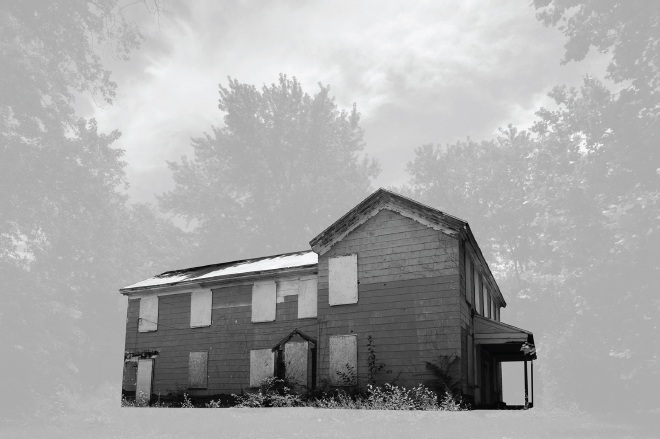BY CLARE HOWARD

Wendel White
Wendel White’s photography painfully deepens our understanding of racism in America. His images speak softly but the message screams at full volume.
Racial discrimination in America has surely evolved over the past century forged by legislation, litigation and social movements only to emerge in sometimes subtler but often equally toxic forms.
“Haunted Places: The Veil of Race in the American Landscape” by Wendel A. White is on exhibit at the Heuser Art Center Gallery through Oct. 16.
White presents the annual Bunn lecture in photography at 5:30 p.m. Oct. 13 in Bradley Hall. Both the lecture and exhibit are free and open to the public.
The exhibit includes photos from two portfolios of work. One is “Schools for the Colored” showing segregated schools that operated for African American children.
It’s hard to view these structures without deep shame. These are structures from the “separate but equal” rationalization that was clearly a falsehood. The exhibit creates provocative interpretations of charter schools, vouchers and tax deductions for private school scholarship
donations – all mechanisms that once again create a separate school system.
The other body of work is “Red Summer,” a portfolio of images of buildings and landscapes — often quiet, sometimes beautiful, sometimes stark – showing locations where racial violence erupted between 1917 and 1923. Each image is paired with a newspaper clipping of the site’s historical racial narrative.
In one location, an African American baby was tossed into a fire. Other images show sites where lynchings occurred. An image of a rural train station with two dogwood trees in full bloom was the site where 400 African American residents of the town were “deported.” Alongside a photo of a county courthouse is a newspaper with a banner headline “Wants marriage annulled; Claims wife has Negro blood in her veins.”
These were years that spanned the period when African American soldiers were fighting for democracy during World War I.
Newspapers are “the veil of information through which most of the country as well as many in the international community, understood and misunderstood these events,” White wrote in his artist statement.
White, 61, said these works emerged from long periods of scholarly reflection and personal experiences. He hopes the exhibit “starts a conversation.”
“Powerful people are able to make arguments to powerless people about school desegregation,” he said. “This is part of the ongoing narrative from slavery to the height of modernism. From the Civil War to the current movement is a continual adaptation of powerful people protecting their power. They may have been forced to give up slavery, but they maintained power and advantage.”
White said each generation witnessed change from Jim Crow segregation to full voting rights for everyone and now there is a reactionary movement against the ideal of full citizenship.
“The game rules change to suit the movement,” he said.
Even though poor whites and poor blacks may share similar struggles, they have not joined in resistance.
Many of the most segregated school in the country today are in the north, White said.
Concerning the removal of Confederate monuments, White said he has no problem with memorializing the average soldier, north or south, but memorials in the public square to leaders of the Confederacy who fought to maintain slavery do not belong in public places of honor. Those statues and monuments belong in a separate location contextualized by accurate historical narratives.
The Civil War was about slavery, not states’ rights, and enslaving one group of people is antithetical to democracy, White said.
Erin Buczynski, director of galleries, exhibitions and collections at Bradley University, said, “The work challenges the viewer to not only
reflect on the historical relevance of what is presented, but also forces us to open our eyes to the undeniable lingering and weight
these heinous events have on the spaces and places that occupy our everyday environments.”
Despite the somber message of his exhibit, White said, “Absolutely, my message is optimism. By addressing these issues, we develop self-awareness and awareness of this narrative. That is like being aware of an illness and the cause of the illness. If we don’t address the cause, we won’t move forward.”
White was born in Newark, grew up in four surrounding states, earned a BFA in photography from the School of Visual Arts in New York and an MFA in photography from the University of Texas at Austin. He taught at a number of universities and is currently distinguished professor of art at Stockton University, part of the New Jersey public university system.
He has received many awards including a Guggenheim Foundation fellowship in photography.

Ambidexter Institute was a private “industrial school” that operated from 1901 to 1908 teaching academics and trades in Springfield, Ill. According to newspaper accounts from the time, many people questioned whether graduates would be able to find any employment. This 2008 photograph captures Ambidexter’s role in “haunted places” in the history of racism in America. (PHOTO BY WENDEL WHITE)
